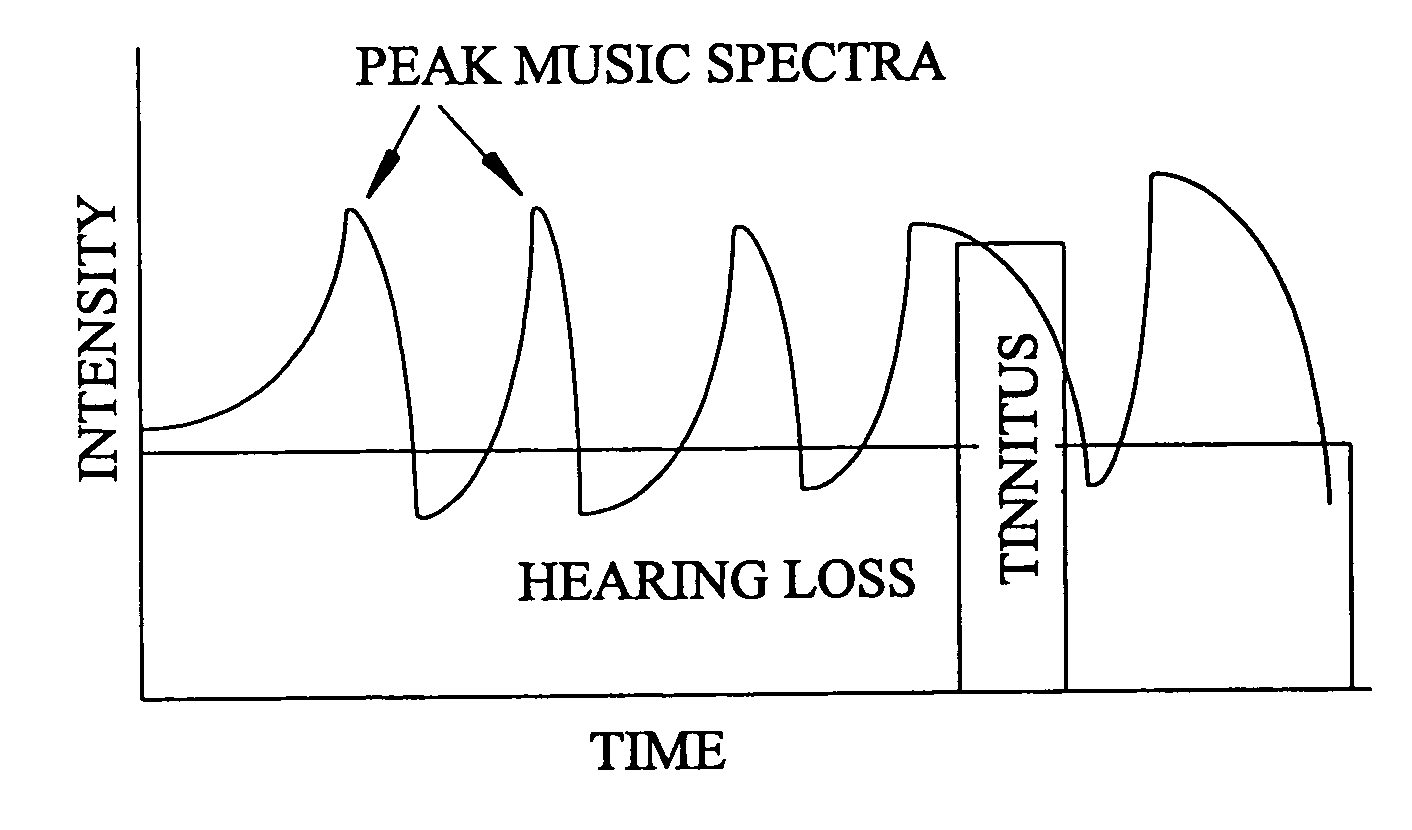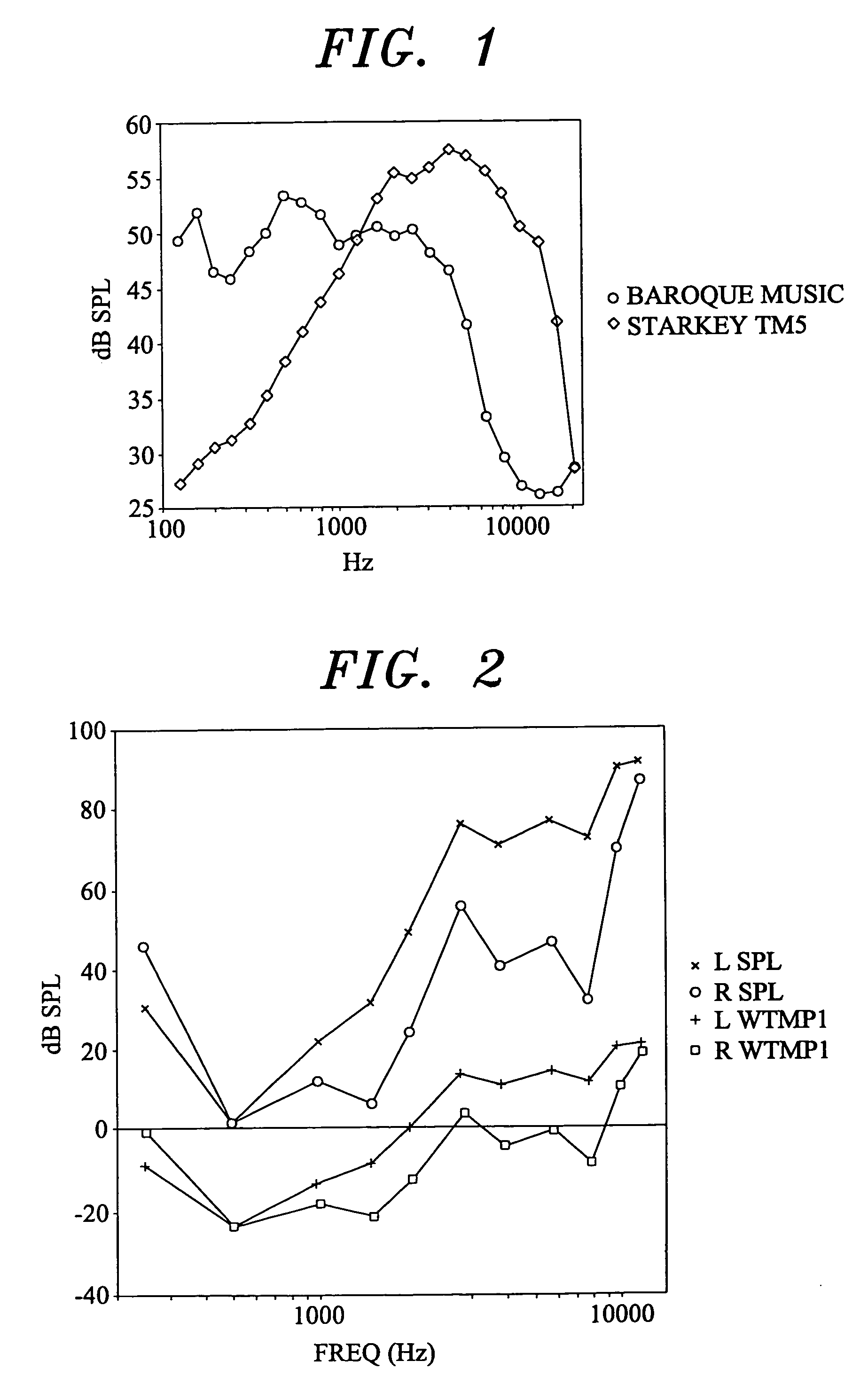Tinnitus rehabilitation device and method
a rehabilitation device and tinnitus technology, applied in the field of tinnitus rehabilitation device and method, can solve the problems of inability to relax, depression, suicide, state and trait anxiety, etc., and achieve the effects of reducing the number of effective treatment options for tinnitus sufferers, reducing the number of patients, and increasing the number of patients
- Summary
- Abstract
- Description
- Claims
- Application Information
AI Technical Summary
Benefits of technology
Problems solved by technology
Method used
Image
Examples
example 2
[0085] The audiogram for the participant chosen to demonstrate how the TMP1 accounts for a steeply-sloping asymmetrical hearing loss (see Example 1 above), was also chosen to demonstrate how the TRP algorithm modifies the intensity of the audio signal at selected frequencies to provide intermittent masking of the tinnitus. Tables 3 and 4 below show the calculations at each frequency for the left and right ears respectively using the TRP algorithm above. The baseline calculation was made as follows: 1Baseline = 0.5 ( A - B ) + B =[ 0.5 ( L SPL 10 + L SPL 12) - 0.5 ( R SPL 0.5 + R SPL 0.75] .times. 0.5 + 0.5 ( R SPL 0.5 + R SPL 0.75) = [ 0.5 ( 89.5 + 91 ) - 0.5 ( 1.5 + 8.5 )] .times. 0.5 + 0.5 ( 1.5 + 8.5 ) = ( 90.25 - 5 ) .times. 0.5 + 5 = 47.625
3 TABLE 3 Corrections and Calculations ELC & SPL L Freq. P's P's transfer (Hz) dB HL SPL = functions = -Baseline = .times. 0.4 = REQ 250 5 23.5 28.5 47.625 -19.15 .times. 0.4 -7.66 500 -10 7.5 -2.5 47.625 -50.15 .times. 0.4 -20.06 750 2.5 5.5...
PUM
 Login to View More
Login to View More Abstract
Description
Claims
Application Information
 Login to View More
Login to View More - R&D
- Intellectual Property
- Life Sciences
- Materials
- Tech Scout
- Unparalleled Data Quality
- Higher Quality Content
- 60% Fewer Hallucinations
Browse by: Latest US Patents, China's latest patents, Technical Efficacy Thesaurus, Application Domain, Technology Topic, Popular Technical Reports.
© 2025 PatSnap. All rights reserved.Legal|Privacy policy|Modern Slavery Act Transparency Statement|Sitemap|About US| Contact US: help@patsnap.com



